I use the Gigabyte Aero 15x for editing 4K videos when I’m travelling. It’s quite a powerful machine and can do pretty much anything I want, the problem I have with it though is at 15” when I’m travelling and I’m on a plane or a bus and cramped on a seat for hours at a time, it is actually a bit too big for what I need. Prior to the recent virus issues I would actually travel every month or so and do smaller one or two day trips, so I wanted something that would be more portable, so I could still get some work done during those trips.
All I’d be using the laptop for is basic tasks like writing scripts, replying to comments, watching YouTube videos, the occasional Excel spreadsheet to make the graphs for my videos, nothing too special. I probably would have been perfectly fine using a Chromebook to be honest, but in the end I decided that I wanted a Windows system just in case I needed to run the odd application that would need it.
In the end, I settled on buying the Xiaomi Mi Air 12.5” for $590 USD. I actually paid more money to get the smaller size and lower specs. The 13.3” version was cheaper and had higher tier hardware like the i5-8250U. But my priority was on size and weight first and foremost.
So with my use case in mind, let’s get into the rest of the review. 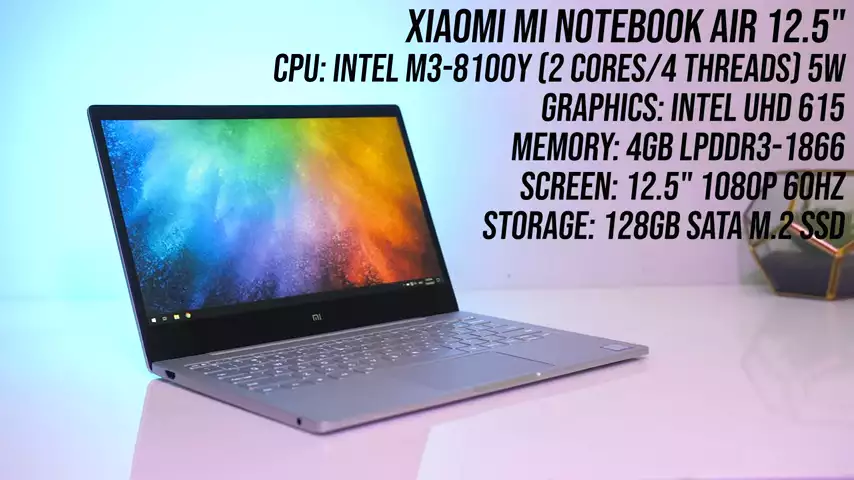 For the specs mine has an 8th gen dual core processor, only Intel HD graphics here due to the smaller size, there’s 4gb of LPDDR3 memory in dual channel. Mine has a 128 GB SATA SSD for storage, and there’s a 12.5” 1080p 60Hz screen. There’s Wi-Fi 5 and Bluetooth 4.1 for network connectivity, however it’s far too thin for an Ethernet port so you’ll need a dongle if you want that.
For the specs mine has an 8th gen dual core processor, only Intel HD graphics here due to the smaller size, there’s 4gb of LPDDR3 memory in dual channel. Mine has a 128 GB SATA SSD for storage, and there’s a 12.5” 1080p 60Hz screen. There’s Wi-Fi 5 and Bluetooth 4.1 for network connectivity, however it’s far too thin for an Ethernet port so you’ll need a dongle if you want that.
The Mi Air has a silver finish, and there are no sharp corners or edges anywhere.  The whole body is metal, so it actually feels quite sturdy given its size. I really liked that there're no logos or anything on the lid, all we’ve got is the small mi logo below the screen, otherwise it’s very clean.
The whole body is metal, so it actually feels quite sturdy given its size. I really liked that there're no logos or anything on the lid, all we’ve got is the small mi logo below the screen, otherwise it’s very clean.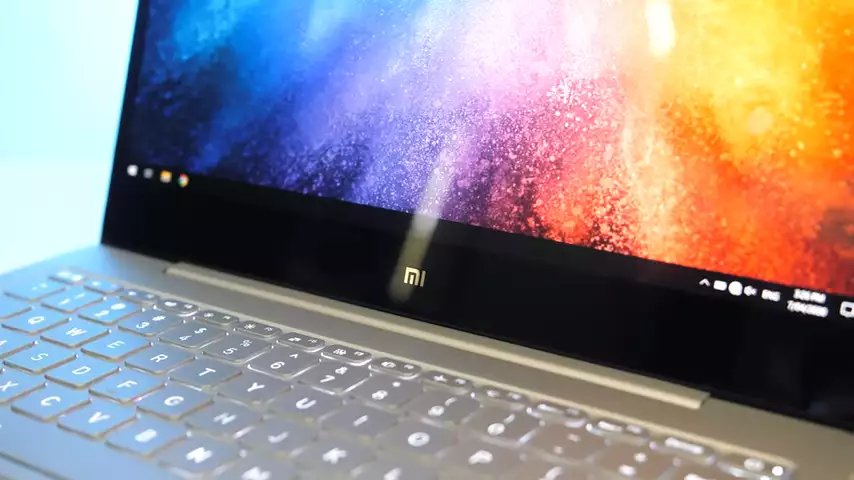 The weight is one of the main reasons I bought this, it’s listed at 1.07 kg online and mine was basically spot on with this. With the small 45w type-c charger, the total weight rises to just 1.26 kg, so it’s quite lightweight for travel.
The weight is one of the main reasons I bought this, it’s listed at 1.07 kg online and mine was basically spot on with this. With the small 45w type-c charger, the total weight rises to just 1.26 kg, so it’s quite lightweight for travel.
As a 12.5” laptop it’s on the smaller side at less than 1.3 cm thin, so quite a portable package. 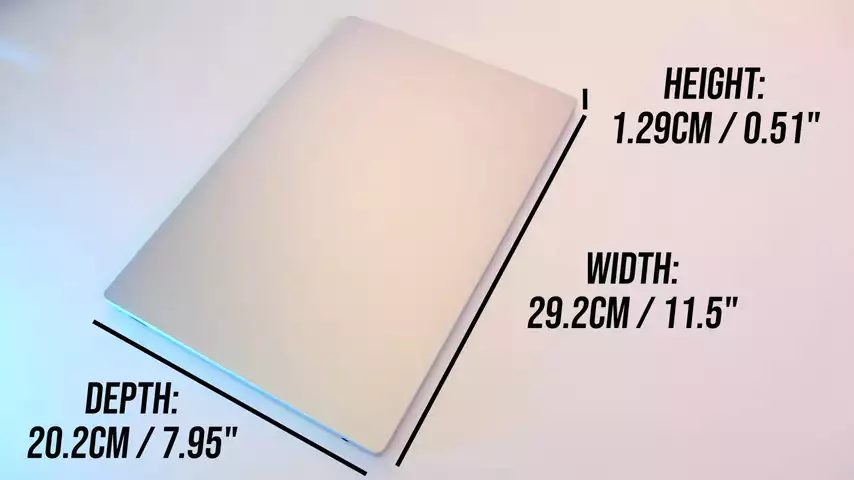 This allows for 9 mm thin screen bezels on the sides, though the chin was larger.
This allows for 9 mm thin screen bezels on the sides, though the chin was larger.
Despite the smaller bezels, the 720p camera is found above the display, no Windows Hello support though. The camera and microphone aren’t too bad, especially when you consider I have had more expensive laptops with much worse.
The keyboard has white backlighting which illuminates all keys and secondary key functions, although the coverage was a bit patchy. The brightness can’t be adjusted, only turned on or off with the F10 key. I found the keyboard alright to type with, though the presses felt a bit shallow, which I suppose is expected from a thinner machine like this, other than that, no issues to call out. There was some keyboard flex while pushing down hard, but I never had any problems with the stability during normal use.
Interestingly screen flex was extremely low, the metal lid did an excellent job and was very solid. The synaptic touchpad clicks down anywhere and worked ok for the most part, however the far left side would only properly click down if I press a little harder which was annoying at times, but clicking in the middle was fine.
The 12.5” 1080p IPS screen has a glossy finish, and I thought it looked alright given the lower color gamuts. I’ve tested it with the Spyder 5, and got 69% of sRGB, 49% of NTSC, 51% of AdobeRGB and 51% of DCI-P3. At 100% brightness the screen got above 300 nits, so decent enough results and ok contrast ratio. 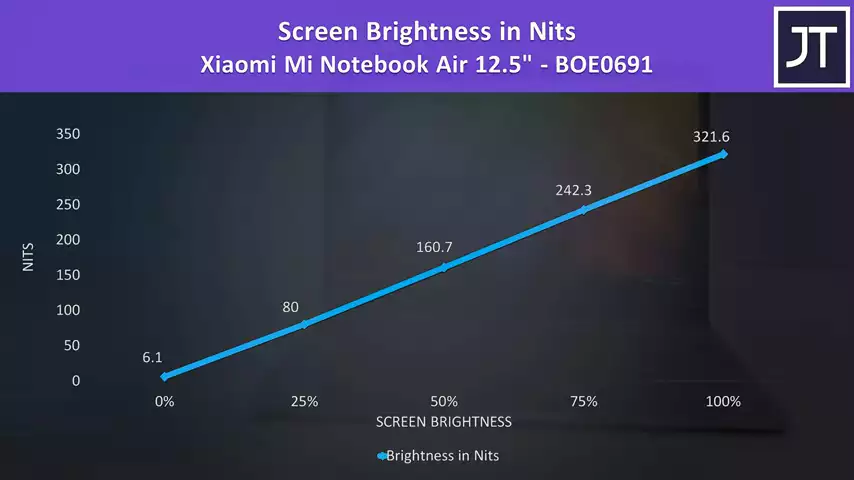 It’s worth noting that after my clean Windows install I wasn’t able to adjust brightness until I manually installed the Intel graphics drivers, Windows update never grabbed them for me.
It’s worth noting that after my clean Windows install I wasn’t able to adjust brightness until I manually installed the Intel graphics drivers, Windows update never grabbed them for me. 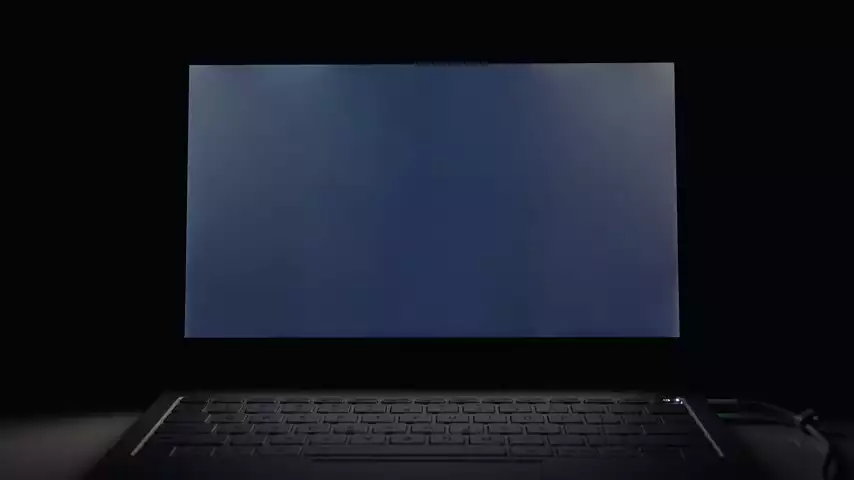 There was a little backlight bleed in this worst case scenario, however I’ve never actually noticed it with my own eyes during normal use, but this will vary between laptops and panels.
There was a little backlight bleed in this worst case scenario, however I’ve never actually noticed it with my own eyes during normal use, but this will vary between laptops and panels.
For I/O, on the left there’s a HDMI port up the back, and a 3.5mm audio combo jack right down the front.  The HDMI port only ran my 4K monitor at 30Hz, so it must be version 1.2.
The HDMI port only ran my 4K monitor at 30Hz, so it must be version 1.2.
On the right there’s just a USB 3 Type-A port, and a USB Type-C port which is also used to charge it.  The small dot at the end is a status LED. There’s nothing at all on the back, and the front just has a groove for getting your finger in to open the lid. Fingerprints and dirt are difficult to see due to the silver finish, however it was easy to clean with a microfiber cloth as the finish is smooth.
The small dot at the end is a status LED. There’s nothing at all on the back, and the front just has a groove for getting your finger in to open the lid. Fingerprints and dirt are difficult to see due to the silver finish, however it was easy to clean with a microfiber cloth as the finish is smooth.
There’s nothing really underneath, no air intakes.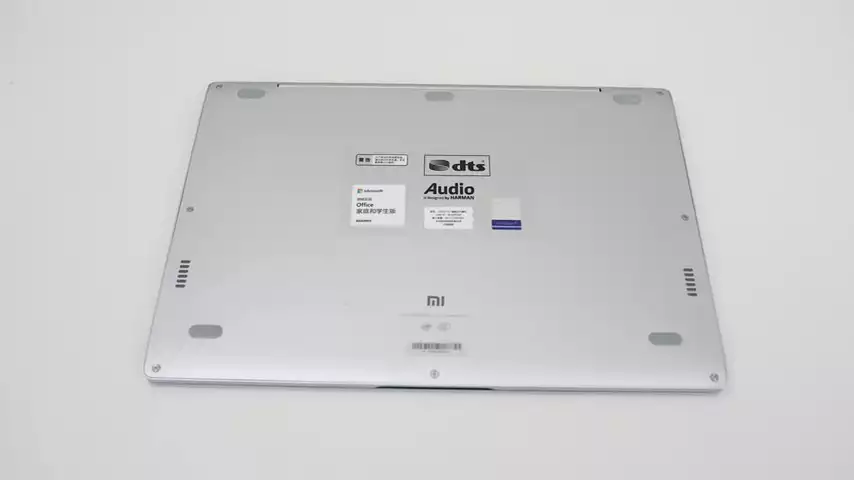 The bottom panel was a little tricky to remove, you need to take out 8 TR5 screws and there’s one hidden at the back in the center behind the rubber foot.
The bottom panel was a little tricky to remove, you need to take out 8 TR5 screws and there’s one hidden at the back in the center behind the rubber foot.
Once inside we can see why there’s no air intakes, there are no fans, it’s all passively cooled as it’s using a lower wattage CPU, just a 5 watt TDP for the m3-8100Y. 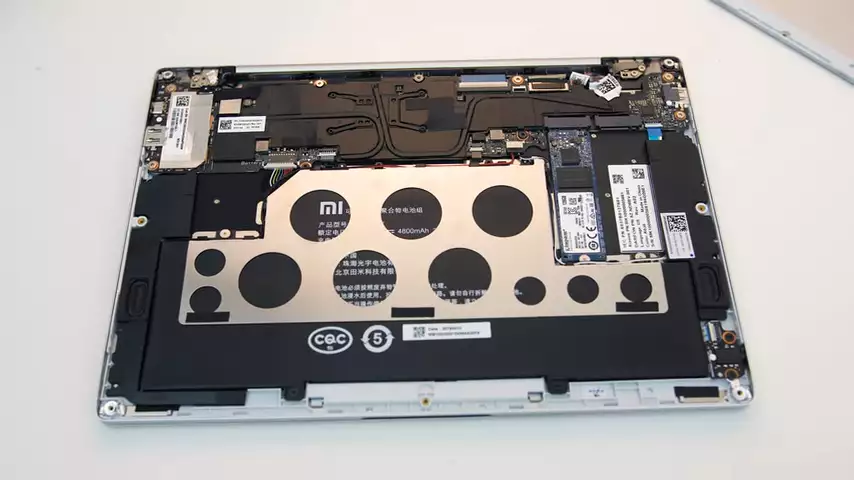 Wi-Fi and memory are soldered to the motherboard and cannot be upgraded, however I was very surprised to find two SATA M.2 slots for storage. Seriously, this is a 12.5” laptop and it’s got two, I’ve had 17-inch laptops that only have one.
Wi-Fi and memory are soldered to the motherboard and cannot be upgraded, however I was very surprised to find two SATA M.2 slots for storage. Seriously, this is a 12.5” laptop and it’s got two, I’ve had 17-inch laptops that only have one.
The speakers are found towards the front left and right corners, and despite the size they weren’t too bad, they still got fairly loud at maximum volume, and the latencymon results looked good.
The Mi Air is powered by a 36.5wh battery. Despite not being that large, it lasted for almost 8 hours when just watching YouTube with the screen on 50% brightness and keyboard lighting off, quite a nice result in this test compared to others, especially when you factor in the battery size.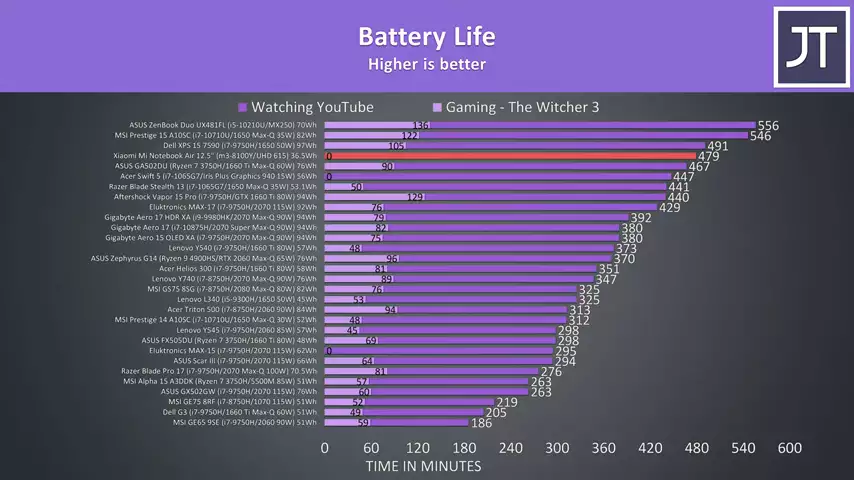 This is due to the lower powered specs, which means as a result it wasn’t possible to run the gaming test.
This is due to the lower powered specs, which means as a result it wasn’t possible to run the gaming test.
As for thermals, in my 21 degree Celsius room it was cool at idle, and even under CPU stress test it was only peaking at 60 degrees. This is because PL1 gets set to 4.5 watts, and the two cores were clocked at around 1.3GHz under this workload. Here’s what the CPU performance was looking like in Cinebench. 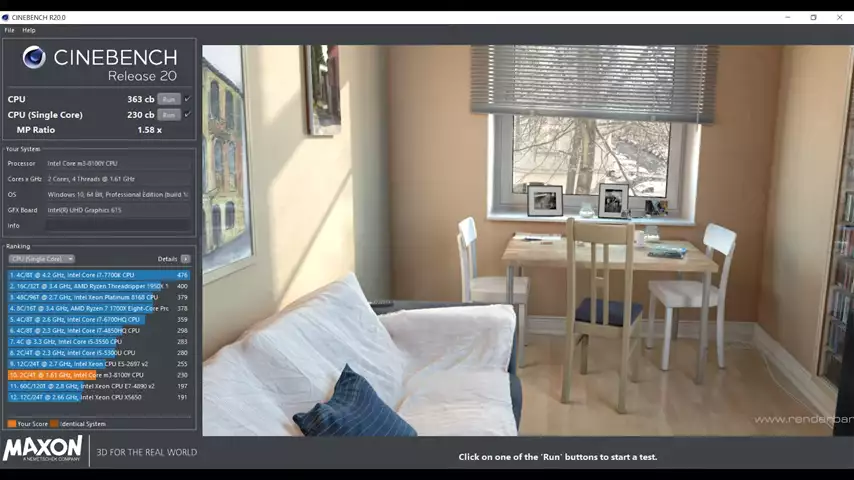 Just for comparison, a modern i7 based laptop will score higher than the multicore speed of this dual core chip in single core, so we definitely won’t be winning any races with the m3.
Just for comparison, a modern i7 based laptop will score higher than the multicore speed of this dual core chip in single core, so we definitely won’t be winning any races with the m3.
As for the areas where you’ll actually be touching, it was quite cool at idle.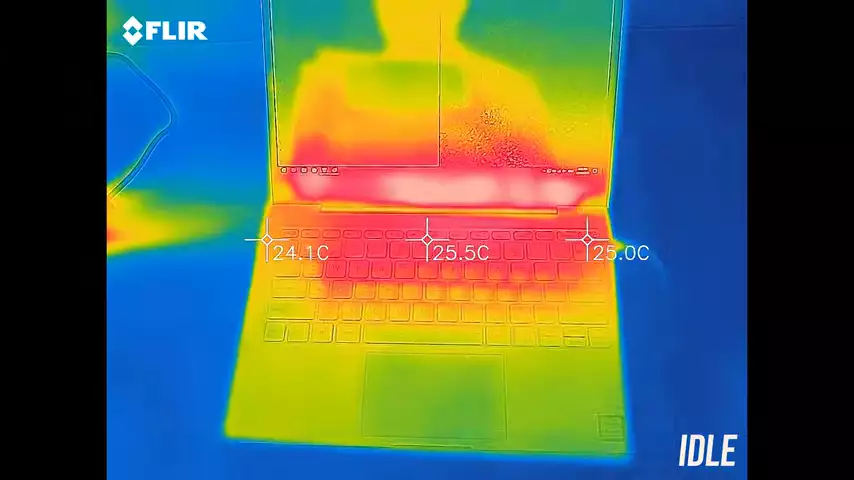 When the CPU stress test was going it was still quite cool, barely a little warm towards the back in the center, absolutely no issues at all, and as there're no fans it remains silent regardless of the workload.
When the CPU stress test was going it was still quite cool, barely a little warm towards the back in the center, absolutely no issues at all, and as there're no fans it remains silent regardless of the workload.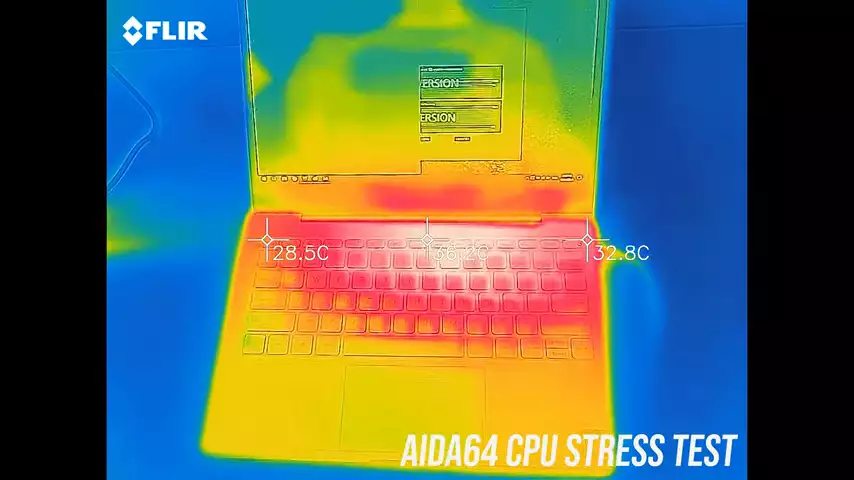 I’ve used Crystal Disk Mark to test the 128gb SATA M.2 SSD, and the speeds were about what I’d expect from a SATA based drive.
I’ve used Crystal Disk Mark to test the 128gb SATA M.2 SSD, and the speeds were about what I’d expect from a SATA based drive.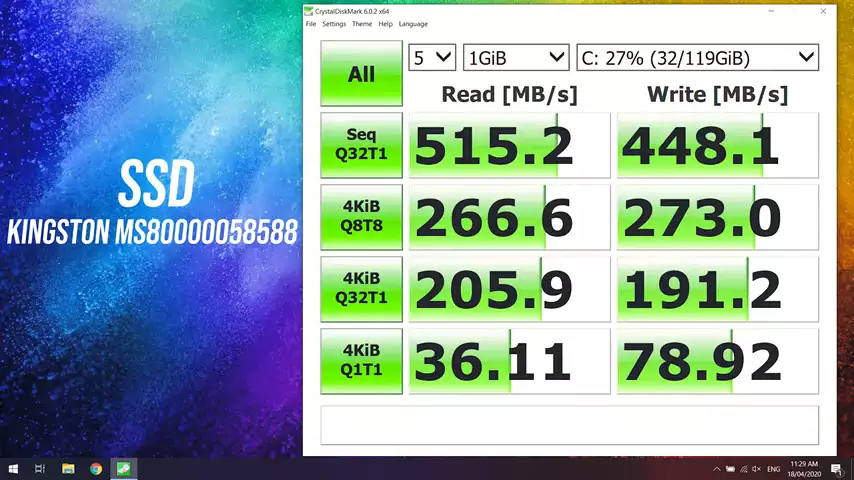 When I bought this notebook in November 2019, it was $590 USD, today it’s a little bit more, but I think still a fair price for what you’re getting. More premium alternatives like the MacBook Air or XPS 13 are not only larger and heavier, but also more expensive. Something like the Xiaomi Mi Air is for those that really value portability and are able to get by with more basic functionality, you won’t be editing video or doing anything resource heavy here, but if you just need to get basic tasks done then I can easily recommend it for travel. Just set your expectations appropriately, it is only a 5 watt TDP dual core processor machine with 4gb of memory, but for what I got it for, it works well.
When I bought this notebook in November 2019, it was $590 USD, today it’s a little bit more, but I think still a fair price for what you’re getting. More premium alternatives like the MacBook Air or XPS 13 are not only larger and heavier, but also more expensive. Something like the Xiaomi Mi Air is for those that really value portability and are able to get by with more basic functionality, you won’t be editing video or doing anything resource heavy here, but if you just need to get basic tasks done then I can easily recommend it for travel. Just set your expectations appropriately, it is only a 5 watt TDP dual core processor machine with 4gb of memory, but for what I got it for, it works well.
Yes, I’m fully aware they’re a Chinese company. Rather than using the Chinese version of Windows that came installed with various Xiaomi apps, I instead installed a fresh version of Windows. For the tasks I’m using it for, I’m perfectly happy to accept any further risks. A lot of people seem overly paranoid about buying a laptop from China, which is kind of ironic when you consider how many other laptops and components come from there. In any case, if a nation state actor wants to blow some hardware based exploit to watch me reply to comments once a month then by all means go ahead.
So what did you think about the Xiaomi Mi Notebook Air 12.5” model? Is it something you’d consider? Or would you pay more money for something a bit more powerful and only slightly less portable? Let me know down in the comments.
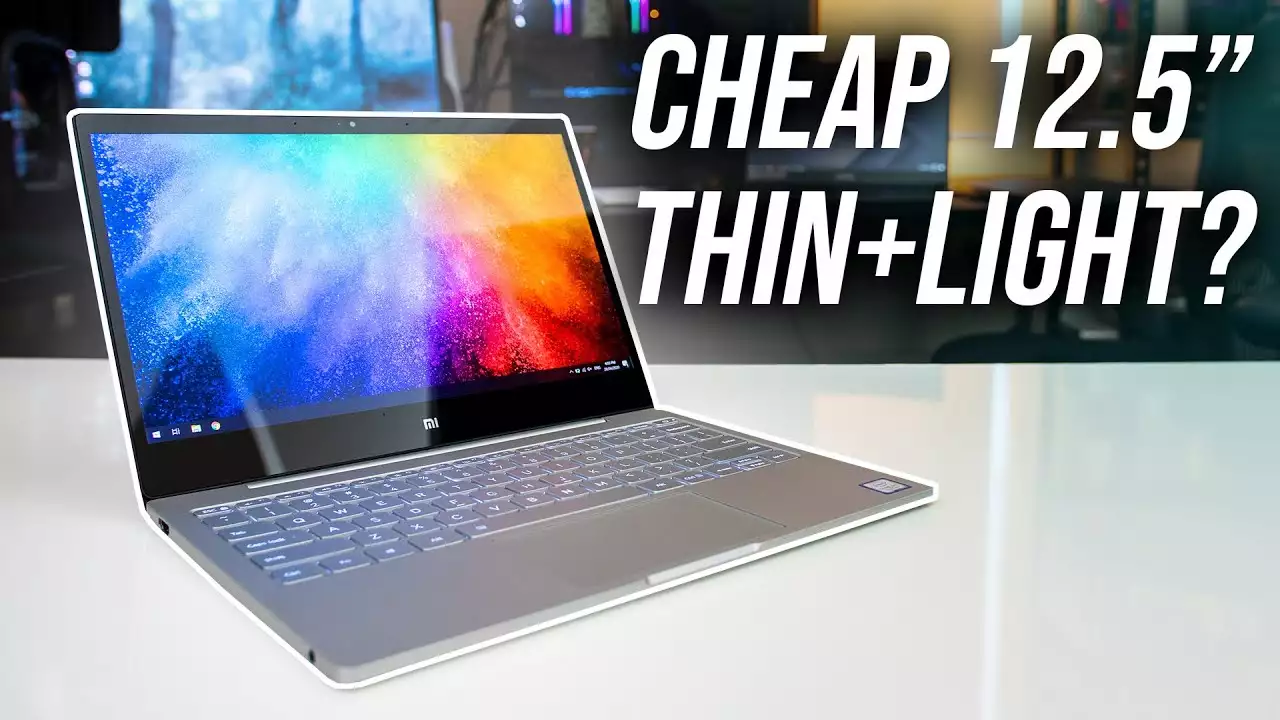

No comments yet